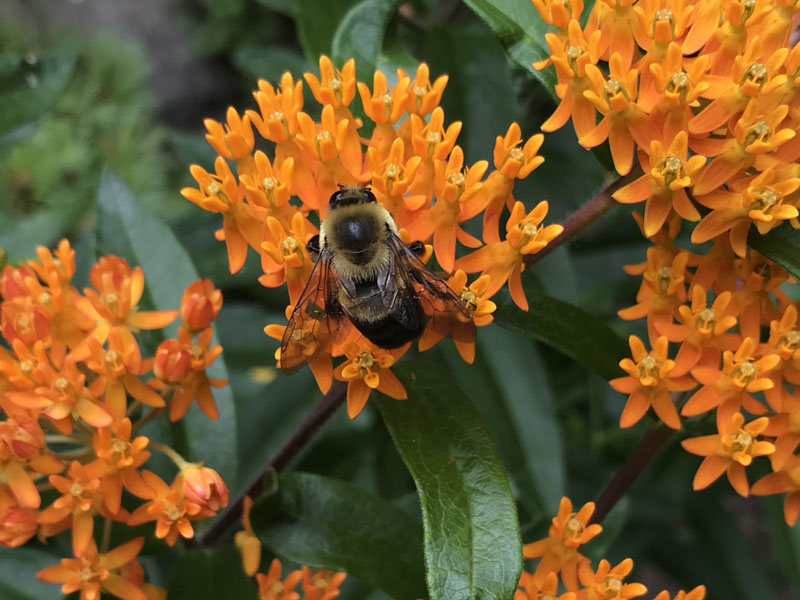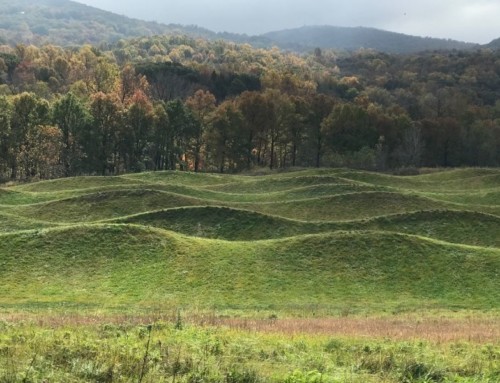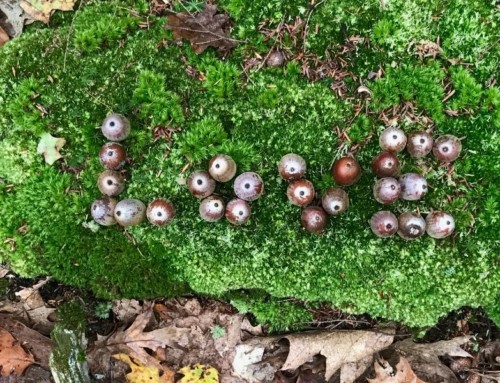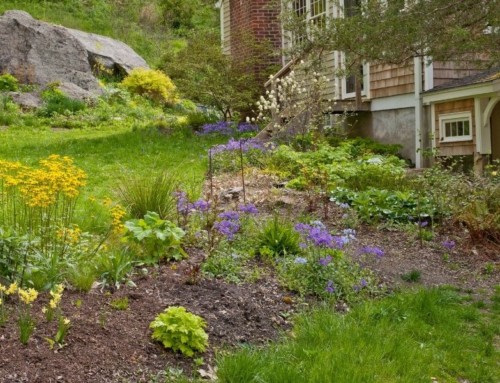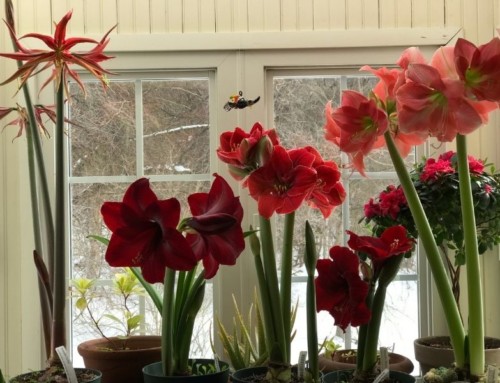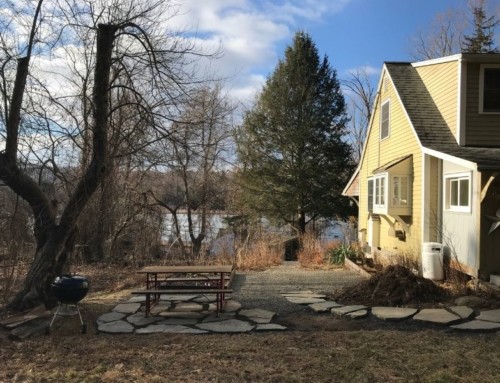Dina Brewster is a farmer (The Hickories in Ridgefield, Connecticut) and Executive Director of CT NOFA (The Northeast Organic Farmers Association).
Last year she inspired me to think big about connections between our yards and local farms.
As I created a half-day workshop for NOFA’s Organic Land Care program in March, a change of wording and her advocacy of conservation agriculture enlarged my outlook.
The program’s name went from my original “Designing and Planting Landscapes for Pollinators” to “Native Plants and Pollinator Habitats in Farms and Gardens”.
I had been focused on how our yards support (or don’t support) the health of surrounding wild habitats. But Dina made it clear how farms fit into the big picture. It’s all connected.
After reading her excellent article on The Pollinator Pathway Project (Spring 2020 Edible Nutmeg) I called Dina for her thoughts on farming during a pandemic and CT NOFA’s Ecotype Project for Pollinator Health.
These initiatives bring together a consortium of stakeholders restoring native habitat to safeguard Connecticut’s food system.
Local land trusts, garden clubs, organic farmers, scientists, landscapers, homeowners, nurseries, CT DOT and DEEP, The CT Agricultural Experiment Station, Dept. of Agriculture and the Xerces Society are all sitting down at the same table. Follow the highlighted links to read the story and learn more.
“If anything, the pandemic has highlighted the need for small family farms and regional food systems,” she told me.
“People suddenly want to shorten the chain between themselves as eaters and the source of their food, so the role of the neighborhood farm has been coming into the forefront.”
“We’ve always been right here doing this work.”
“Creating a reliable food system calls for a shift of priorities from efficient and as cheap as possible to reliable and local. It needs to be about reliability and nourishment.”
How to make regional systems more reliable?
“We need to look at ecological, economic and social aspects and build them into the system. A local system relies on farmers, pollinators and consumers.
“The big threat is a lack of pollination services.”
To protect the pollinators we must plant native plants and protect habitat.
Her farm is surrounded by suburban communities. “Given the lay of the land in Connecticut, most farms are.”
If homeowners create habitat then I don’t have to give up space for crop cultivation or do it all myself.”
“We need to look at stewardship and ecological services that our open space can provide – beneficial insects, pollination services, carbon sinks, soil and water health.
I understand the need for soccer fields, but where we can increase ecological services of land, we should – especially in suburban southern Connecticut.”
That involves the DOT along roadsides, garden clubs on main street, conservation parcels and homescale habitat restoration in back (and side and front) yards “instead of huge plots of sod in home landscapes or stretches of invasive plants taking over roadsides and open space.”
Learn more about Pollinator Pathways and how you can support pollinators in your yard.
THE FARM TODAY
“It’s not as though it was easy before, but with COVID, we had to figure out how to shapeshift quickly.
We had put in a lot of work growing and planning for events – tons of floral work for lots of big weddings.” All cancelled.
Now the 45-acre farm is closed to the public, for the safety of food, people and livestock. No leisurely farm strolls or pick-your-own blueberries this year. But diversity is still the key to survival – and success.
The CSA is fully subscribed and feeding 130 families a week, in addition to a Farm Store open for online ordering. It’s a 3-ring circus with curbside pickup.
There’s a cut flower CSA and flowers are included in regular CSA shares.
And you can ORDER ONLINE bouquets, meat, wool, organic vegetables, farm-made salsa and vinaigrette and more for curbside pickup.
That’s Reliability.
